-
 Scandic Trust Group strengthens sales network with First Idea Consultant
Scandic Trust Group strengthens sales network with First Idea Consultant
-
Deadly Typhoon Kalmaegi ravages Vietnam, Philippines

-
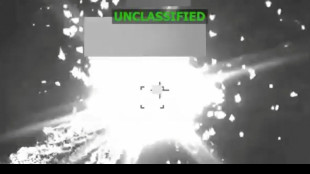 Three killed in new US strike on alleged drug boat, toll at 70
Three killed in new US strike on alleged drug boat, toll at 70
-
Chinese microdrama creators turn to AI despite job loss concerns

-
 Trump hails Central Asia's 'unbelievable potential' at summit
Trump hails Central Asia's 'unbelievable potential' at summit
-
Kolya, the Ukrainian teen preparing for frontline battle

-
 Big leap in quest to get to bottom of climate ice mystery
Big leap in quest to get to bottom of climate ice mystery
-
Markets drop as valuations and US jobs, rates spook investors

-
 'Soap opera on cocaine': how vertical dramas flipped Hollywood
'Soap opera on cocaine': how vertical dramas flipped Hollywood
-
Under pressure? EU states on edge over migrant burden-sharing

-
 US influencers falsely associate Mamdani with extremist group
US influencers falsely associate Mamdani with extremist group
-
Hungary's Orban to meet Trump in face of Russia oil sanctions

-
 US facing travel chaos as flights cut due to govt shutdown
US facing travel chaos as flights cut due to govt shutdown
-
Liverpool and Man City renew rivalry as they try to narrow Arsenal gap

-
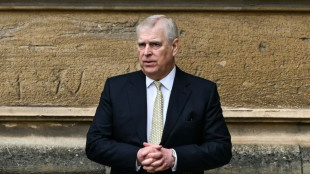 UK's Andrew asked to testify over Epstein as he formally loses titles
UK's Andrew asked to testify over Epstein as he formally loses titles
-
Local hero: 'DC sandwich guy' found not guilty of assaulting officer with sub

-
 Dead famous: Paris puts heritage graves up for grabs
Dead famous: Paris puts heritage graves up for grabs
-
UK grandmother on Indonesia death row flies home
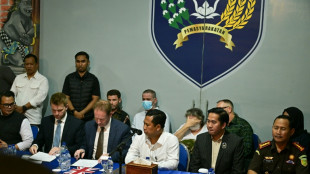
-
 Former NFL star Brown extradited from Dubai to face trial in shooting - police
Former NFL star Brown extradited from Dubai to face trial in shooting - police
-
Chile presidential hopeful vows to expel 'criminal' migrants to El Salvador

-
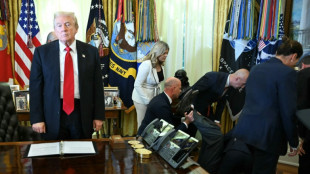 Trump event paused in Oval Office when guest faints
Trump event paused in Oval Office when guest faints
-
NFL Colts add Sauce to recipe while Patriots confront Baker

-
 Home owned by Miami Heat coach Spoelstra damaged by fire
Home owned by Miami Heat coach Spoelstra damaged by fire
-
Tesla shareholders approve Musk's $1 trillion pay package

-
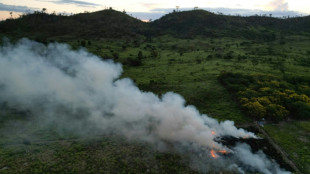 World leaders launch fund to save forests, get first $5 bn
World leaders launch fund to save forests, get first $5 bn
-
Villa edge Maccabi Tel Aviv in fraught Europa League match

-
 Protests as Villa beat Maccabi Tel Aviv under tight security
Protests as Villa beat Maccabi Tel Aviv under tight security
-
US Supreme Court backs Trump admin's passport gender policy

-
 Japan boss Jones backs Farrell to revive Ireland's fortunes
Japan boss Jones backs Farrell to revive Ireland's fortunes
-
MLB Padres name former reliever Stammen new manager

-
 'Grand Theft Auto VI' video game delayed again until Nov. 2026
'Grand Theft Auto VI' video game delayed again until Nov. 2026
-
Martino returns as head coach of MLS Atlanta United

-
 Hamilton dismisses Ferrari exit claims
Hamilton dismisses Ferrari exit claims
-
Musetti keeps ATP Finals hopes alive, joins Djokovic in Athens semis

-
 England boss Borthwick wants 'brilliant' Marcus Smith to shine against Fiji
England boss Borthwick wants 'brilliant' Marcus Smith to shine against Fiji
-
Piastri says he is confident he can recover and win drivers' title

-
 Verstappen admits he may need a bit of 'luck' to haul in rivals in title race
Verstappen admits he may need a bit of 'luck' to haul in rivals in title race
-
Kazakhstan to join Abraham Accords as Trump pushes Mideast peace

-
 'Moral failure': Leaders seek to rally world at Amazon climate talks
'Moral failure': Leaders seek to rally world at Amazon climate talks
-
UN Security Council votes to lift sanctions on Syrian president

-
 Democratic giant, trailblazer and Trump foe Nancy Pelosi to retire
Democratic giant, trailblazer and Trump foe Nancy Pelosi to retire
-
World leaders ditch ties at sweaty climate summit

-
 Dallas Cowboys' Marshawn Kneeland dies at 24
Dallas Cowboys' Marshawn Kneeland dies at 24
-
Rally outside Rockstar against GTA studio's 'union busting'

-
 McLaren boss says would rather lose title than issue team orders
McLaren boss says would rather lose title than issue team orders
-
Sabalenka, top WTA stars urge Slams to revive 'stalled' negotiations

-
 5 killed in Afghan-Pakistan border fire despite peace talks: official
5 killed in Afghan-Pakistan border fire despite peace talks: official
-
Trump unveils deals to lower costs of some weight-loss drugs

-
 Controversial Canadian ostrich cull order will go ahead
Controversial Canadian ostrich cull order will go ahead
-
Mexico's Sheinbaum to boost reporting of sexual abuse after being groped

Vera Rubin observatory reveals stunning first images
Breathtaking stellar nurseries, a sprawling stretch of cosmos teeming with millions of galaxies, and thousands of newly discovered asteroids were revealed Monday in the first deep space images captured by the Vera C. Rubin Observatory in Chile.
More than two decades in the making, the $800 million US-funded telescope sits atop Cerro Pachon in central Chile, where dark skies and dry air provide ideal conditions for observing the cosmos.
One debut image is a composite of 678 exposures taken over seven hours, capturing the Trifid and Lagoon Nebulae -- both several thousand light-years from Earth -- glowing in vivid pinks against orange-red backdrops.
It reveals these birth places of stars in unprecedented detail, with previously faint or invisible features now clearly visible.
Another, dubbed "The Cosmic Treasure Chest," shows the universe "teeming with stars and galaxies -- the seemingly empty black pockets of space between stars in the night sky when you look at it with unaided eyes, are transformed here into these glittering tapestries," said Zeljko Ivezic, director of Rubin construction.
Spiral, elliptical, and clustered galaxies appear in vivid reds, blues, and oranges. These colors reveal key details such as distance and size with unmatched precision, helping scientists better understand the universe's expansion history.
The colors don't directly match what the naked eye would see, explained scientist Federica Bianco, since the telescope captures a far broader range of wavelengths. Instead, they are representational: infrared is mapped to red to represent cooler objects, while ultraviolet is mapped to blue and indicates warmer ones.
- 10-year flagship project -
An interactive version of the image is now available on the Rubin Observatory's website.
"One of the things that is very fun is that if you zoom in and you look at one of the fuzzy galaxies there, you might be the first person to be paying attention to that fuzzy blob," said Clare Higgs, education and public outreach science lead.
The observatory features an advanced 8.4-meter telescope and the largest digital camera ever built, supported by a powerful data system transferring 20 terabytes each night.
Roughly the size of a car, the camera captures 3,200-megapixel images. It would take 400 ultra-high-definition televisions stacked together to view a single Rubin image at full resolution.
Later this year, the observatory will launch its flagship project, the Legacy Survey of Space and Time (LSST). Over the next decade, it will scan the night sky nightly, detecting even the subtlest changes with unmatched precision.
Named after pioneering American astronomer Vera C. Rubin — whose research provided the first conclusive evidence for dark matter — the observatory continues her legacy by making dark matter a central focus of its mission.
Dark energy, an equally mysterious and immensely powerful force, is believed to drive the accelerating expansion of the universe. Together, dark matter and dark energy are thought to make up 95 percent of the cosmos, yet their true nature remains unknown.
"By observing up to 20 billion galaxies, we'll study how light from those distant galaxies has reached us — and nearly every galaxy's light has been bent by the gravitational interaction of dark matter that pervades the universe," said scientist Aaron Roodman. This, he added, will help illuminate these cosmic mysteries.
A joint initiative of the US National Science Foundation and Department of Energy, the observatory is also considered one of the most powerful tools ever built for planetary defense.
In just 10 hours of observation, Rubin discovered 2,104 previously unknown asteroids in our solar system, including seven near-Earth objects -- none of which pose a threat. All other ground- and space-based observatories combined discover about 20,000 new asteroids per year.
- Chilean pride -
Chile hosts telescopes from more than 30 countries, including some of the most advanced astronomical instruments in the world — among them the ALMA Observatory, the most powerful radio telescope on Earth.
Cerro Tololo Observatory helped achieve the landmark discovery of the universe's accelerating expansion -- a breakthrough that earned the 2011 Nobel Prize in Physics.
Another major project, the Extremely Large Telescope, is slated to begin operations in 2027 and promises to probe previously unreachable cosmic distances.
J.Williams--AMWN



